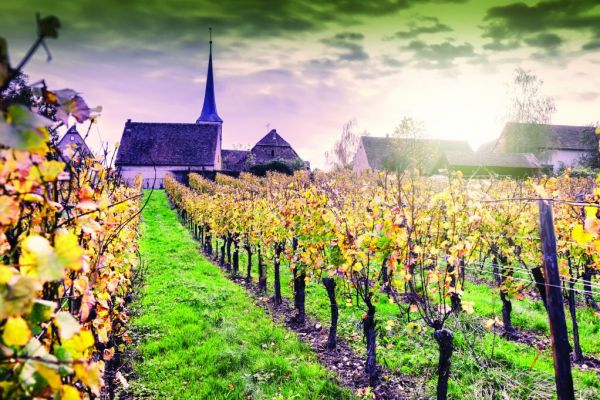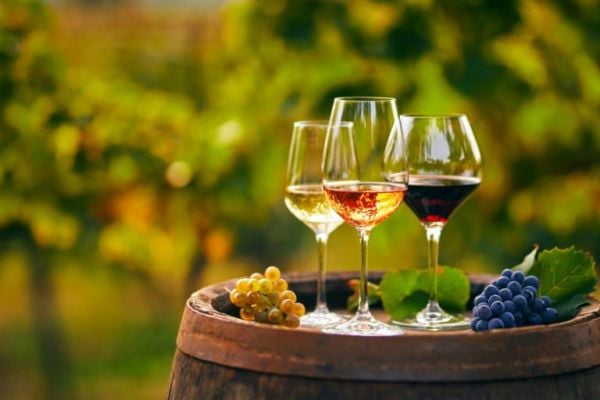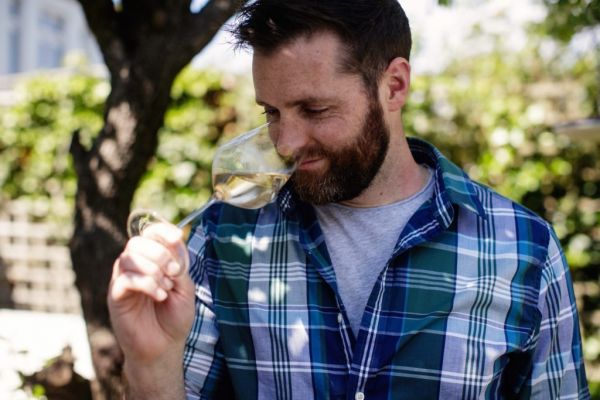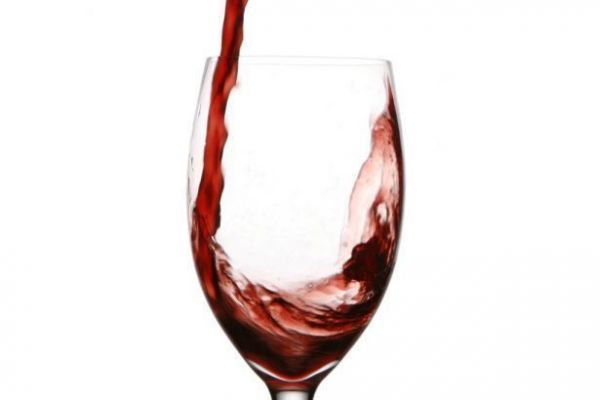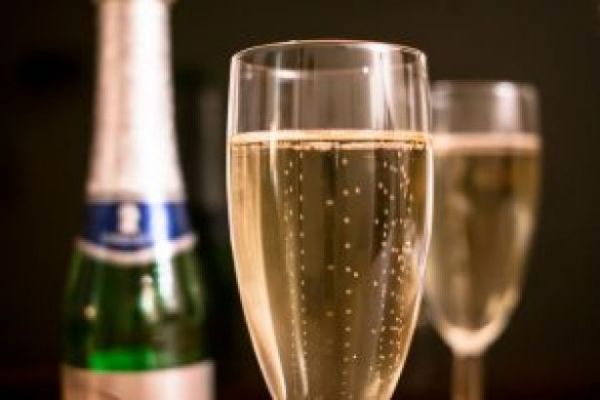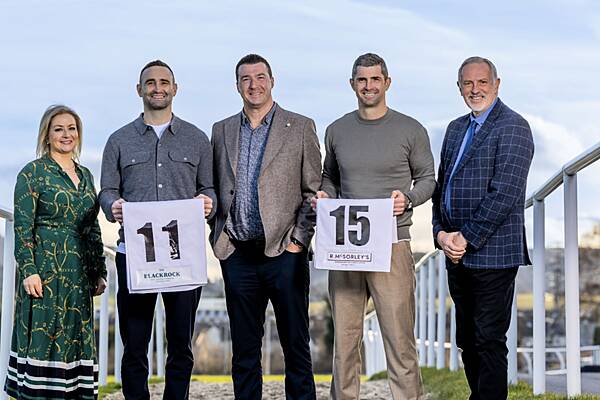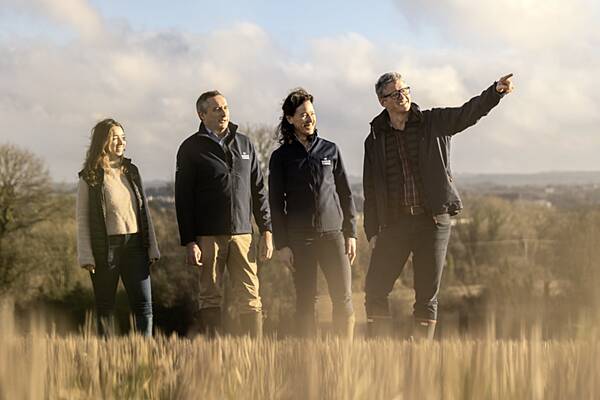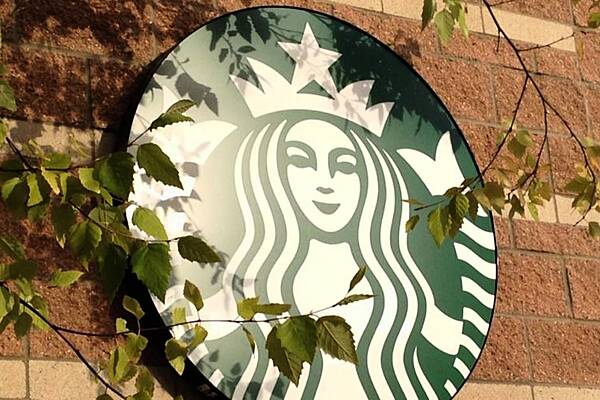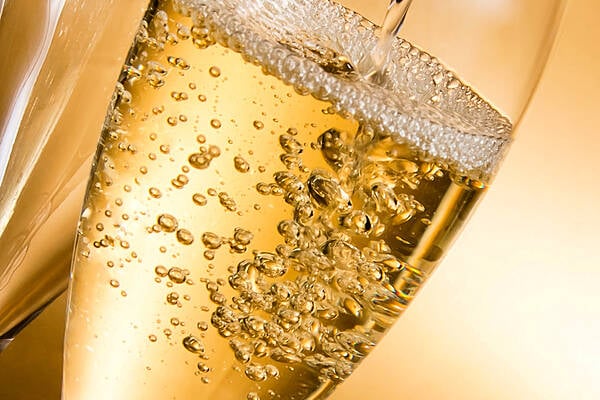Hospitality Ireland's wine exert Kevin Ecock examines what can feel like the alpha and omega of the global wine industry: French wine.
********************************************************************************************************************************
France is the custodian of the greatest collection of respected wine names in the world. Its grape varietals have populated vineyards across every other wine region, its wine laws have formed the basis of how the world of wine organises itself, between Bordeaux and Burgundy, it controls fine-wine investment, and champagne continues to be the world’s premier sparkling wine. Each one of these achievements is impressive.
Collectively, they are an immense accomplishment. France nestles into third or fourth place every year in world vineyard acreage, netting about 10% of the total. While its wine consumption is falling year on year, it still manages to enjoy about 11% of the world’s total, with only the US drinking more than France itself. In terms of actual volumes produced, France trades places with Italy every now and then as the world leader, filling somewhere between seven and eight billion bottles worth of wine every year.
These are fabulous numbers, indicating just how important wine is to France and how well received its wine is throughout the world. When the Irish began to increase their awareness of wine in the early 1980s, France, through Sopexa, was the industry leader in terms of education and marketing initiatives.
Stores had easy access to large cut-out Eiffel Towers, miles of red-white-and-blue bunting, and endless volumes of brochures extolling the virtues of specific appellations from French vineyards. At that time, wine education through the innovative Wine Development Board (later the Wine Board of Ireland) forged a lasting alliance with the UK’s Wine & Spirit Education Trust to deliver a series of high-quality programmes to educate a young Irish wine trade to the Diploma of Wine standard. Many of these courses were focused on France, and, along with the excellent work by Sopexa, they shepherded in a keen and focused awareness of the wines of France into the very heart of the Irish wine trade.
Thus, in the late 1980s, France had an almost 50% share of the Irish wine market. While this dipped to around 40% in the mid-1990s and, after the surge from Australia and Chile, just above 11% in the mid-noughties, there was a general acceptance that wine lists, wine stores and households were better off with French wine than without.
At the same time, an odd thing happened: French wine regions became associated with specific taste profiles. It may seem strange today, where taste is more often associated with grapes, rather than regions, but, in the early 1990s, customers recognised French appellations by name and style. Thus, Muscadet was white and dry, the Rhône red and fruity, and Bordeaux red (mostly) rich and dry. It was simplistic, and it worked. Quality analysis seldom entered this equation, as it was often assumed that, as the wine was from France, it was well made.
PHYSICAL PLANE
Much of this simplification was a direct result of how France had, since the 1930s, arranged its wine legislation. Core to this is a belief that terroir exists on both a philosophical and physical plane, where place determines outcome. Thus, one area of land can never duplicate a wine from another, as the regionality, climate, soils, and a host of other parameters define a vineyard’s potential.
The vineyards of France were mapped and specific areas granted an appellation d’origine controlée (AC), where ‘d’origine’ is replaced with the name of the appellation on the label, except in the case of champagne, where both ‘appellation’ and ‘controlée’ are assumed once the word champagne is used. There are about 300 ACs in France, varying in size, potential quality and recognition.
Today, regions that wish to apply for a new AC status, or have theirs upgraded, face a lengthy and tedious process in which the granting authority (the Institut National de l’Origine et de la Qualité, or INAO) will conduct an extensive series of tests that can take up to 20 years to finish. Complications can arise where boundaries are historically and commercially sensitive. This is especially true in Burgundy, where, for instance, Pouilly-Fuissé, in the Mâconnais, has no vineyards designated premier cru, or where Pommard, in the Côte de Beaune, should possibly have at least two grand cru vineyards, but currently has none. While both regions declined these status designations when they were offered many years ago, they would dearly love to have them now, as their ex-cellar prices would rise accordingly if so.
Working alongside AC status are the vin de pays and vin de table categories, each of which is now aligned with the EU designations of PDO (protected designation of origin), PGI (protected geographical indication) and table wines. Both Bordeaux and Burgundy lie at the heart of wine investment.
This has led many to believe that both regions not only produce the finest wines, but that this has always been the case. While both produce exceptional wines, this is not uniform through their regions, and, most certainly, this has not always been the case. Hermitage, in the Rhône Valley, was lauded across the courts of Europe before most of the Médoc in Bordeaux had even been planted. In the nineteenth century, a wine named Hermitage was produced in Bordeaux, where the well-favoured wine was blended with the other (less favoured) wine from Bordeaux. Add to this the fact that wine investment, per se, really only dates back to the 1960s, and that the French vineyard landscape was radically different before its destruction, in the late nineteenth century, by a louse (Phylloxera vastatrix) infestation, and we find that France, its vineyards, and much of its valuable trade are quite new phenomena, whose stories have only just begun.
When Andrew Jefford wrote The New France, he reasoned that ‘“new” doesn’t simply refer to what didn’t exist before, but also to the present, changed state of that which has long existed’. Hospitality Ireland met with winemaker Pierre Gaillard at Kelly’s Resort Hotel & Spa at a recent wine-tasting experience. His vineyards are among the finest in the northern Rhône and cover such incredible appellations as Côte-Rôtie, Cornas and St Joseph. In addition, Gaillard has properties in Faugères and Banyuls. All of his wines hark to tradition and, yet, are fabulously modern, whereby fruit and the land in which they are grown are both encouraged to express themselves in gentle, balanced and memorable works of art.
Gaillard struck out on his own as recently as 1985, at which time he had neither wines nor vineyards. Now, he tells Hospitality Ireland, he has cleared land that has not been planted since pre-Phylloxera times, and he is hard at work recreating what he describes as Vitis allobrogica, the precursor to Syrah in the northern Rhône and mentioned as early as Roman times. “Domaine Pierre Gaillard makes amazing wines,” says Bill Kelly. “I first came across them at a buyers’ meeting in Paris. The fruit was so fabulous that I just had to bring them in for the hotel.”
Kelly’s, in Rosslare, has one of the finest French wine lists in Ireland, yet it can still find new, exciting styles to wow the palate. This is a great example of new meeting old, where France is moving with the times. One of the most interesting areas that the vineyards of France have embraced in the recent past is farming towards lutte raisonnée techniques.
Loosely translated as ‘the reasoned struggle’, its adherents work to use fewer chemicals, and less often. There is little doubt that a new generation of grape farmers has emerged in France, where sustainability is an important concept. Many have taken this further and are now organic, while others have converted to biodynamism as a life philosophy and a better way of producing wine.
The impressive Gérard Bertrand, from the south of France, expressed this elegantly in his book Wine, Moon and Stars (a title suggested by Lynne Coyle MW of O’Briens Wines) when he wrote, ‘The essence of an exceptional wine is a combination of time, space, energy and soul. A great wine is connected to its terroir, to its grape variety, to the plot of land of its birth, but also to the universe that surrounds it.’
Bertrand has brought together his passion, thoughts and skill to produce not only a fine-wine selection (O’Briens, Dunnes Stores) from across southern France, but also Clos d’Ora, ‘a wine inspired by quantum theories [...] carrying a textured message of peace, love and harmony’. Pascal Rossignol of Le Caveau wine merchants carries an extensive selection of artisan-produced wines from France, each one of which, he tells us, “truly reflect their region of origin and their terroir. They deliver the right balance of purity, natural freshness and drinkability (and, dare we say, digestibility!).
To achieve this, our winegrowers cannot cut corners. They adopt a sustainable work ethic in the vineyards and a ‘light hand’ approach in the winery. They produce their wines as naturally as possible, avoiding the systematic use of additives.”
WINEMAKING PROCESS
Purity of fruit can be found all across the modern French wine trade. While some of this can be attributed to the success of imports from the likes of Australia and Chile, it also follows shifting taste preferences in its principal overseas markets, in the US and the UK. Bordeaux shows this well, where, at the very top level, in the Médoc, wines are now produced to both age and drink young, as the science of winemaking is better understood and has filtered into even the most traditional of cellars.
Château du Tertre, in Margaux, dates back to 1143. It is now a 52-hectare biodynamic farm and one of the first properties in Bordeaux to ferment grapes in egg-shaped concrete vats. Burgundy has not been left behind either. Properties like Domaine Drouhin (Gilbeys) bring the best of tradition together with the best of modernity. Michel Chapoutier (Findlater Wine & Spirit Group) continues to bring new life to each of his extensive properties across the Rhône Valley and elsewhere, with a message that resonates across all of France.
Chapoutier’s core values include respect for everything in the winemaking process, from the soil to the consumer; conviviality, generosity and audacity. His aim is to keep an “open mind, embracing new horizons, other localities, other organic winegrowing methods. Being audacious means combining tradition and modernity, making it possible for them to join forces and engender new know-how and craft.” It is very much an anthem for France, its winemakers, and, ultimately, its wines.
